Fly Fishing For Cornetfish
March 10th, 2024
The first cornetfish I ever caught was on a fly, and the entire experience was instantly seared into my memory. It was like catching an alien creature–a bizarre and fascinating species! I wasn’t sure how to handle it, so I decided to simply grab it behind its bony head, while the tail flapped wildly.
Many people, even locals I’ve learned, confuse cornetfish with trumpetfish. This is of course because the two fish have a very similar appearance. But, there are differences and they’re distinct species.
Cornetfish make fantastic fly fishing quarry, and I sure have had fun stalking and catching them in the salt. In this article I’ll explain to you exactly how you too can catch your fill of these one-of-a-kind marine fish.
And with that, let’s dive in!
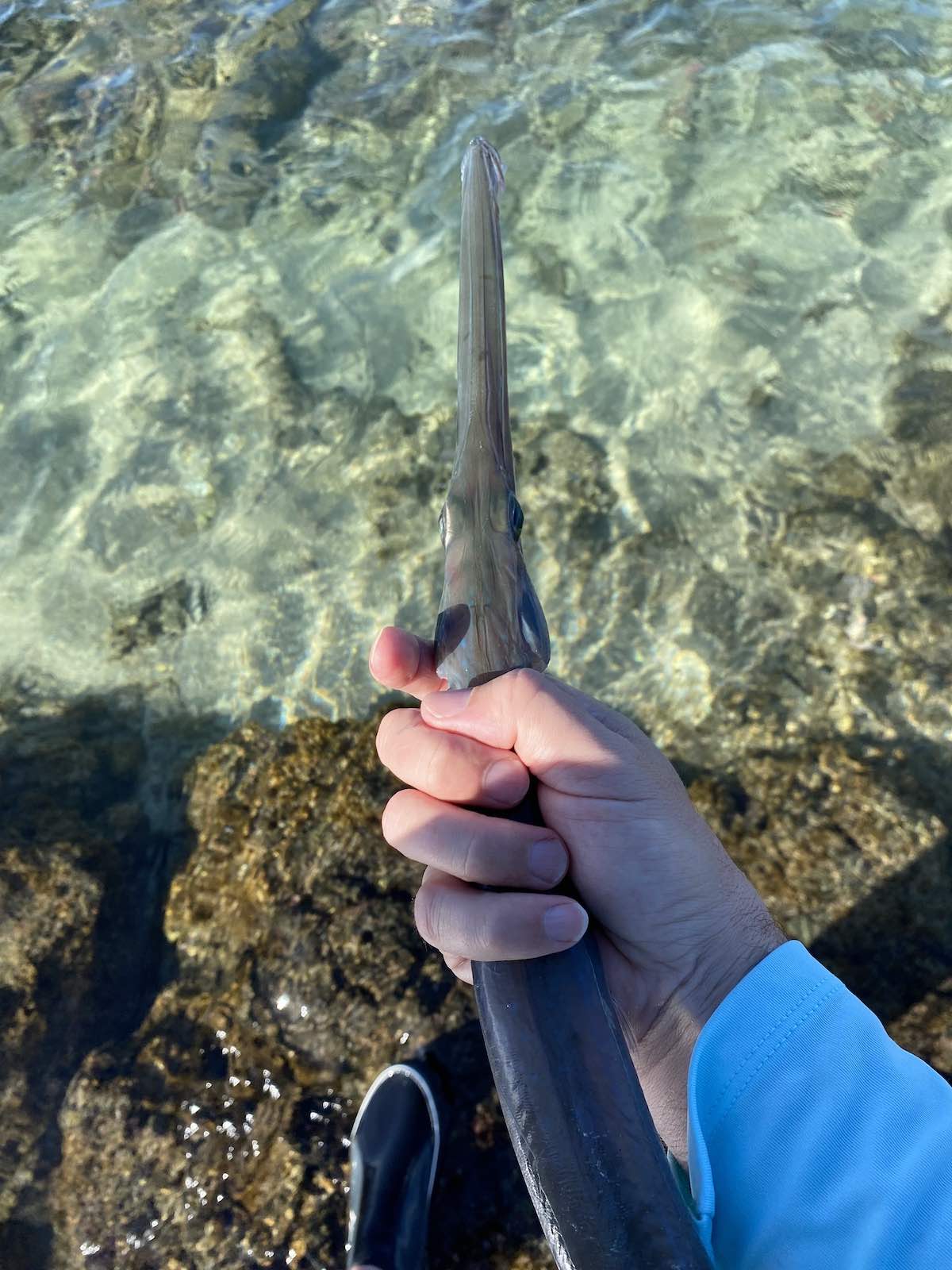
Here’s one of many cornetfish (Fistularia commersonii) I caught while casting flies from the beautiful shores of the Big Island of Hawaii.
Cornetfish Species
The fly fishing strategies in this article will apply equally to all of the cornetfish species, which includes:
Blue-spotted or Smooth cornetfish (Fistularia commersonii)
Pacific cornetfish (Fistularia corneta)
Red cornetfish (Fistularia petimba)
Tobacco or Unarmed cornetfish (Fistularia tabacaria)
The last time I was in Hawaii, an on-foot guide walked by me with his sport. He asked if I was catching anything, and I said that I’d caught some nice cornetfish.
He looked at me a bit confused, and then said politely, “You mean trumpetfish.”
I wasn’t going to argue, but do understand that trumpetfish are a different species, although they look similar and are in the same superfamily, Aulostomoidea.
Aulostomoidea is a Greek word comprised of aulos (“flute”) and stoma (“mouth”). So, a pretty apt description.
Why Target Cornetfish?
Too many fly anglers think that chasing anything other than trout is uninteresting. Every time I hear this type of comment, I’m baffled. I can say with all honesty that I appreciate, and often target, obscure species of fish with my fly rod.
And so it goes for cornetfish.
I found myself on the Big Island of Hawaii recently, and I’d brought along my fly fishing gear. Late one afternoon, before the sun had set, I brought my rod down to an ocean cove and began casting a streamer. I had no idea what species may be lurking around.
As I stripped-in my fly, I noticed a long and slender fish following it for some distance. I was instantly intrigued.
I cast again, and began experimenting with a slightly different stripping cadence.
Bam! The sleek fish took my fly and a respectable fight began.
When I landed the fish, I had no idea what it was–other than alien-looking. It had an absolutely fascinating appearance, and I couldn’t wait to research what species it was when I got back to the hotel.
When I sent pictures of my catch to fellow anglers, each one admired the fish’s unique aesthetic.
Over the ensuing days, I would target and catch quite a few cornetfish of various sizes, including a large one. I learned to thoroughly enjoy the game of cat-and-mouse that seemed to play out each time.
These fish can max out at just over five-feet in length, but three feet is much more common.

What an alien species! I caught this large blue-spotted cornetfish while sight fishing at night near my hotel. Their coloration changes to a banded pattern after the sun sets.
Where to Find Cornetfish
Cornetfish are a saltwater species with a wide distribution around the world. They can be found across the entire South Pacific (French Polynesia, Fiji, Solomon Islands, Vanuatu, New Caledonia, etc.), each of the Hawaiian islands, along most of Australia, Indonesia, New Guineau, Borneo, and throughout the coasts of Southeast Asia and China.
They can also be found along the coasts of India, Madagascar, Sri Lanka, Eastern Africa, Oman, and Yemen. They’ve even spread to the Mediterranea sea, where they’re considered an invasive species.
While you can catch cornetfish in deeper water, you’re going to have the most success fishing for them in lagoons, coves, and along shorelines. They seem to prefer calmer, shallow water where they ambush fish, shrimp, and even squid.
If you’re fly fishing from the shore in Hawaii, for example, you can be sure they’re around even if you don’t immediately see them. They have an uncanny ability to appear of out of nowhere–I observed this behavior often.
In fact, one afternoon while I was tossing streamers from the rocky shallows, I noticed a long fish suddenly appear. Initially I thought it was a barracuda. The fish held motionless in the water, almost like it was just observing me. A few casts later I landed it, another cornetfish.
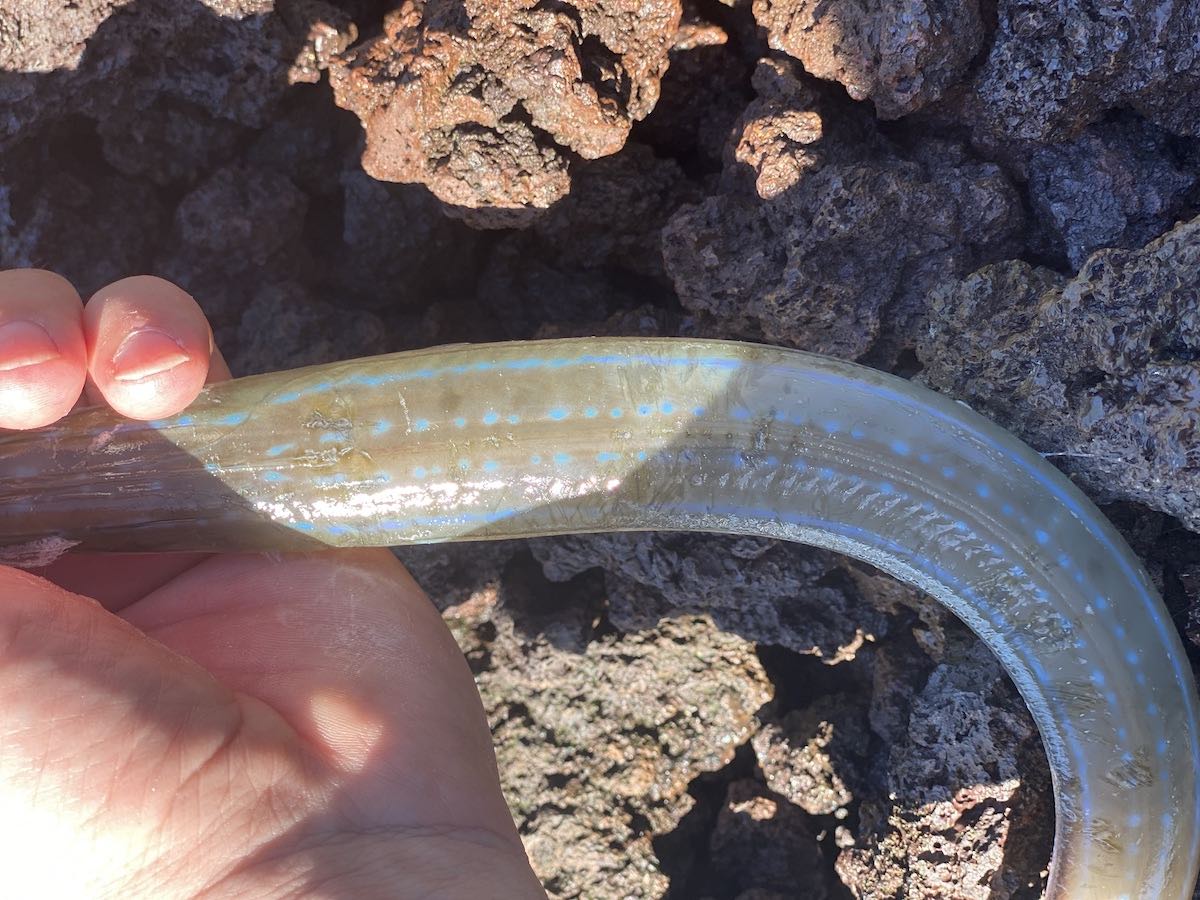
Blue-spotted cornetfish have beautiful blue mottling along their dorsal side, but they can also alter their coloration, most notably at night.

This is the first cornetfish I’d ever caught–a serendipitous surprise!
Cornetfish Fly Fishing Tactics
Cornetfish are willing to take a fly during the day, or at night–and they aren’t discriminating predators. I found that they were very curious, and would at least follow just about any streamer I tossed their way.
They didn’t spook easily, and would often loiter if they didn’t take my fly.
A short (3-6 inch), medium-speed stripping cadence was most productive. Don’t slow your fly down–keep it moving, even when the fish is in pursuit. If you reduce the speed of your fly, cornetfish will lose interest. A chased baitfish doesn’t slow down.
What I learned is that they’re just as active at night as they are during the day–maybe even more so.
One of the most fun aspects of these fish is that you’ll often be sight-casting to them.
One evening on Hawaii I went out to do some scouting. There were areas on the hotel grounds where lights would partially illuminate certain areas of the cove.
Fortuitously, I noticed an unusually long cornetfish holding just 8-10 feet off the shoreline. I wondered if it would still be around if I jogged back to my room to grab my fly rod.
Sure enough, it was.
I cast well past the fish, and stripped my streamer past it.
On my third cast, the cornetfish demolished my fly and after a short but vigorous fight, I had the fish in my hands. It was a gorgeous specimen of well over 48-inches, pictured below. Notice the banded nighttime pattern it adopted.
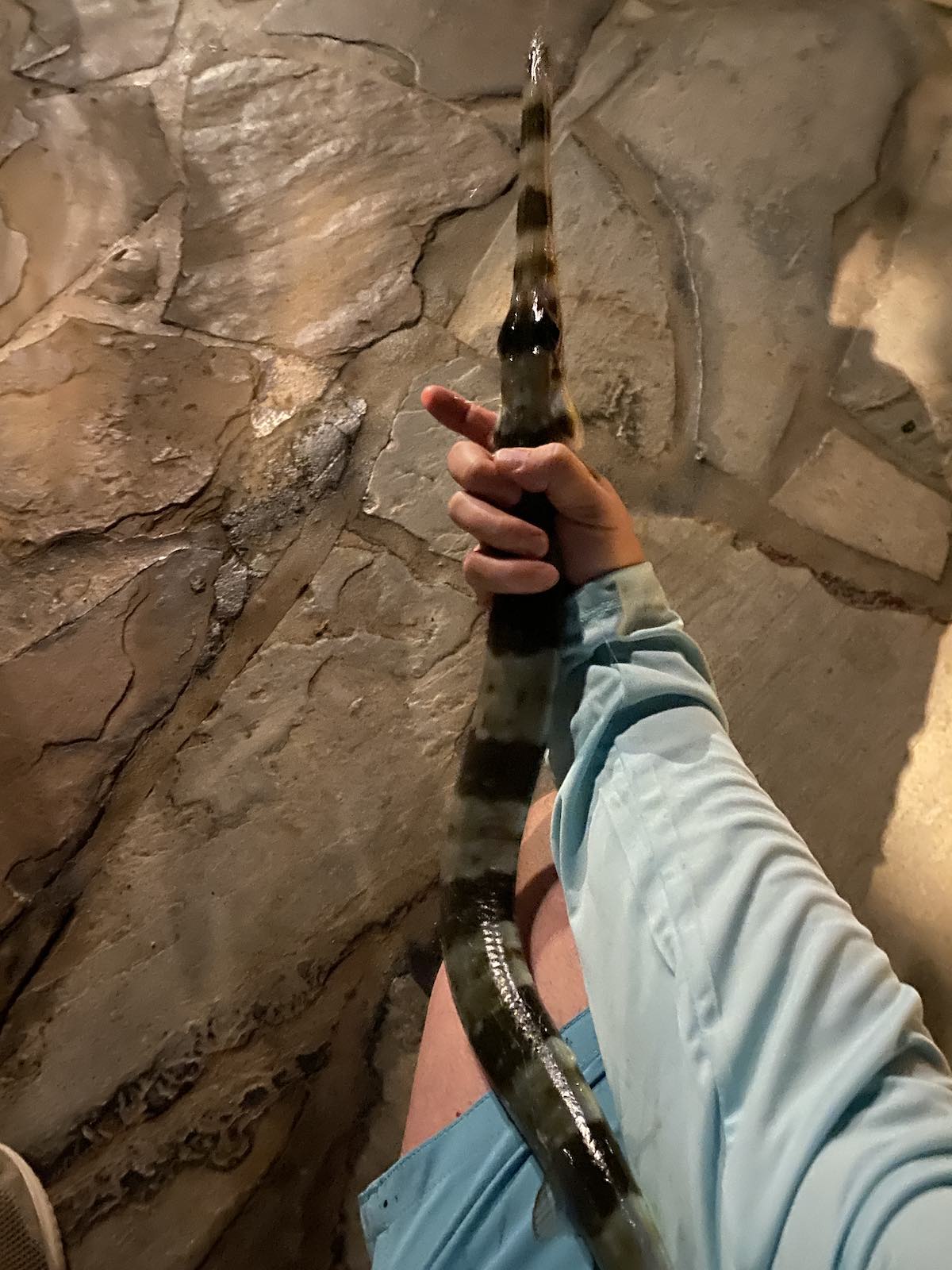
Cornetfish don’t want a slow or sinking fly. They’re only interested in forward motion.
Fortunately, they aren’t leader shy either. Nor are they spooked by motion above the water, such as walking or casting.
Despite their oddly shaped mouths, they would often completely inhale my shrimp patterns. It was impressive to behold.
Despite their slim body shape, they can put up a respectable fight. Lots of thrashing.
Here’s a photograph of what cornetfish look like when they’re holding in shallow water, waiting for prey to ambush. This picture was taken at night, and I’ve added arrows to point out two cornetfish.
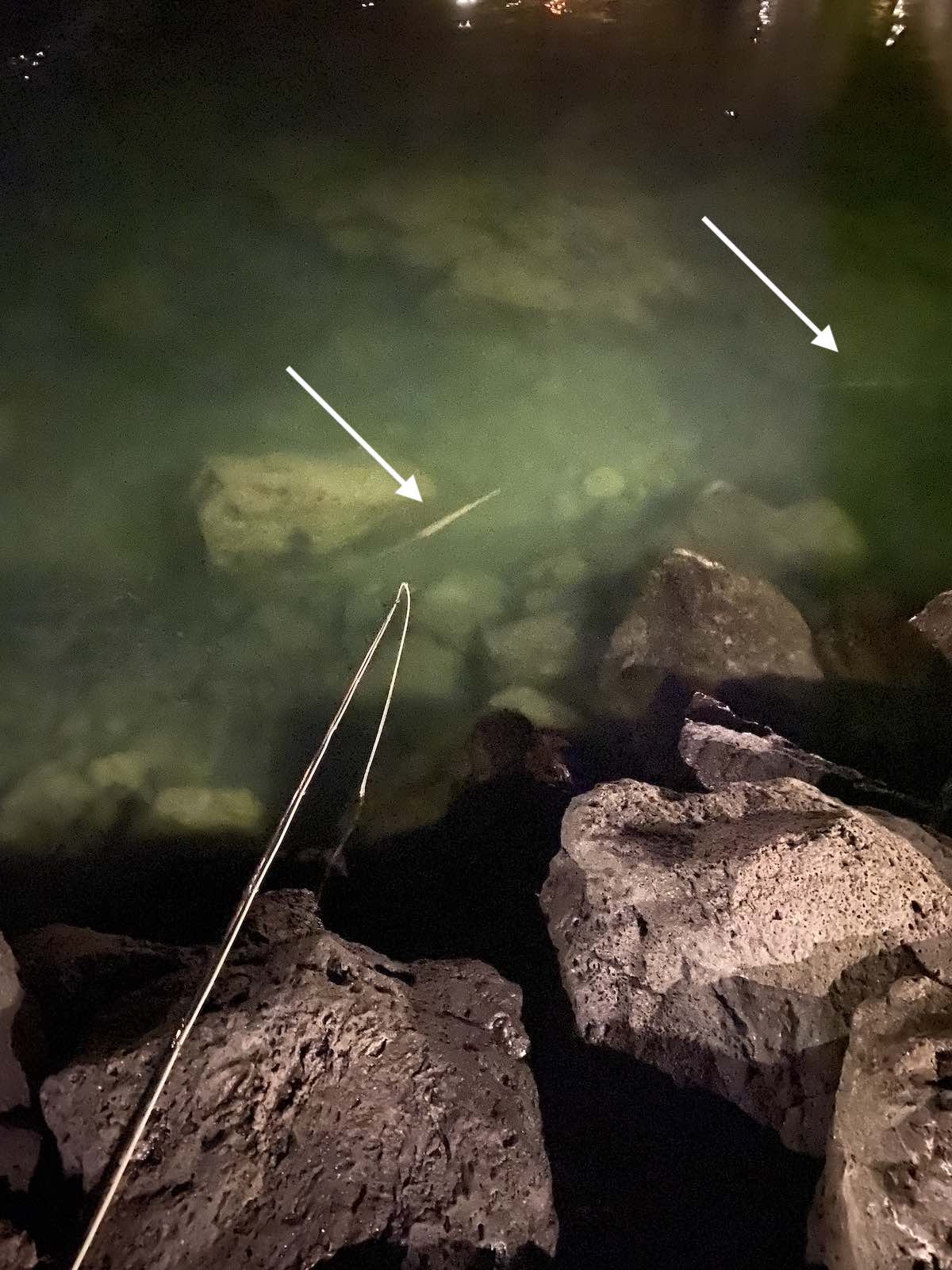
The Best Flies for Cornetfish
The cornetfish I encountered didn’t seem interested in any flies on the surface. Plugs didn’t interest them.
Your best bet is to use a shrimp pattern. Personally, I had a lot of success using a weighted shrimp pattern with floating weight-forward fly line, but if you’ve got full sinking or sink tip line, you could likely use unweighted patterns with just as much success.
Here’s a picture of the fly pattern that brought many cornetfish to my net. I’m convinced that anything that resembles this fly will yield similar results.
Unsurprisingly, a clouser minnow worked as well, but not as well as the shrimp patterns.
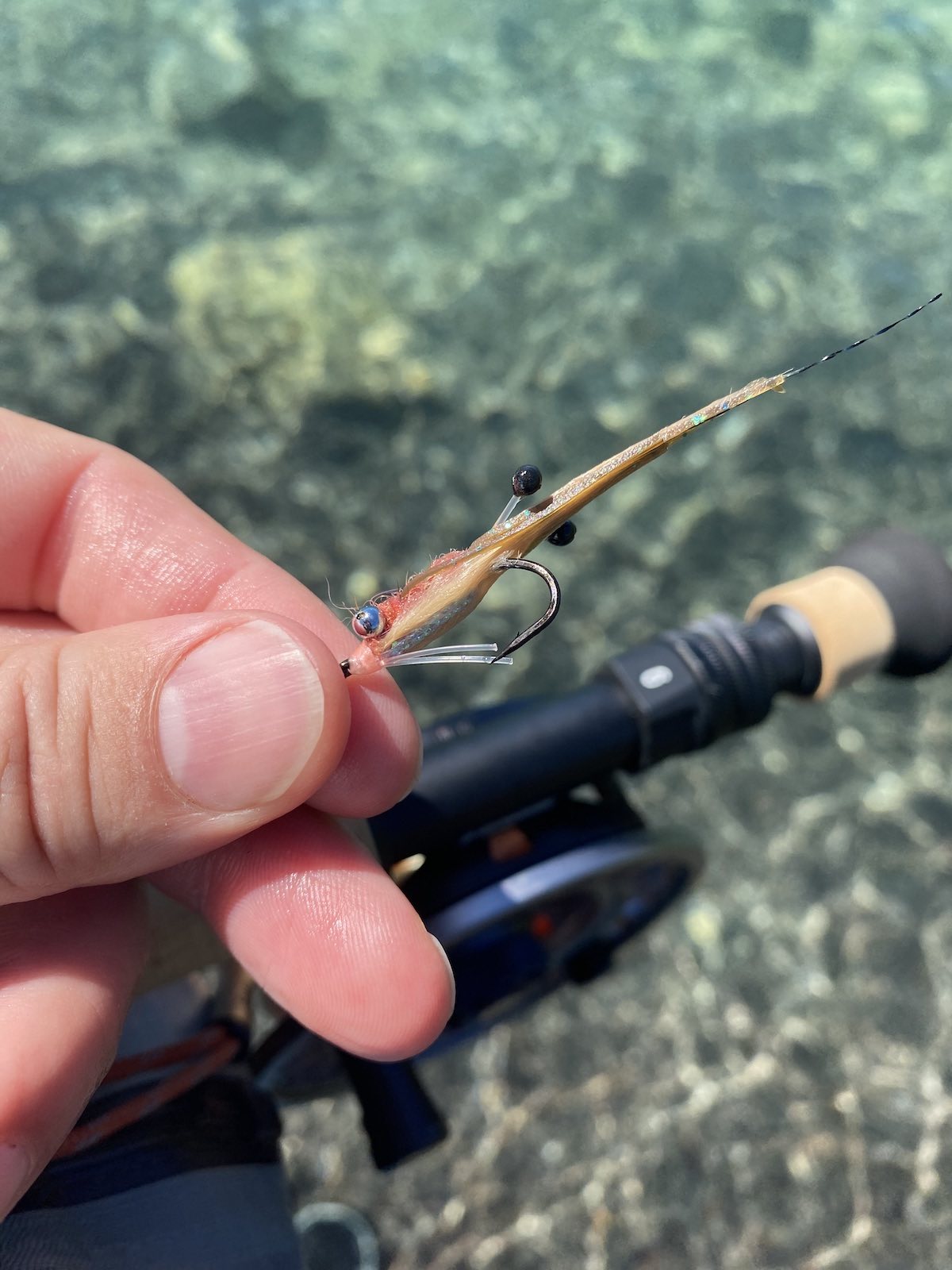
In the below picture, you can see the type of water where I was catching cornetfish. The depth of the water here is anywhere from 2-4 feet deep, but I caught them in slightly deeper water too.
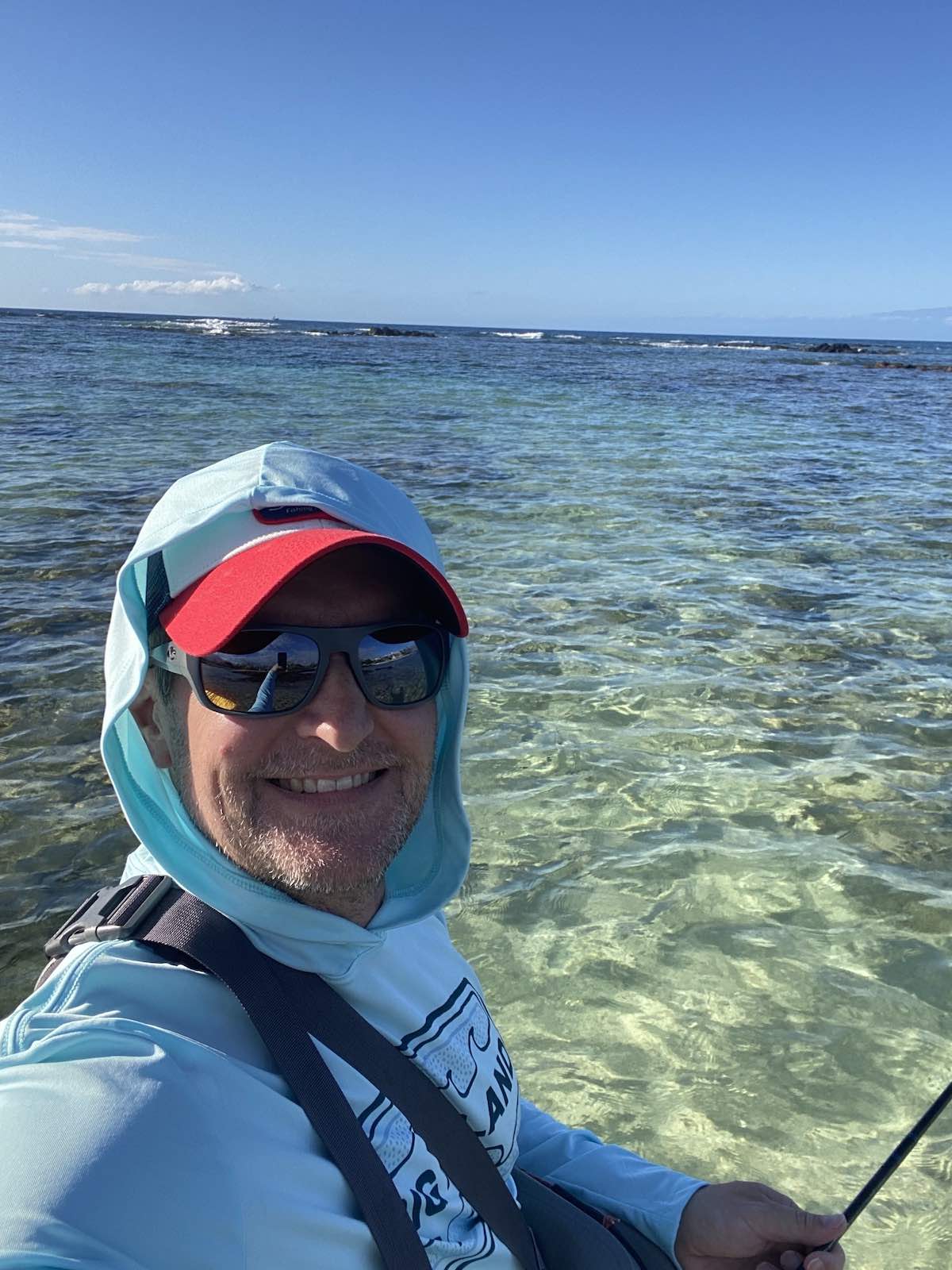
Recommended Fly Gear
Fly Rod
Generally speaking, I tend to use my 9-foot 9-weight fly rod whenever I’m casting in saltwater, mainly because it allows me to push through the wind a little easier. Cornetfish themselves wouldn’t warrant anything above a 5-weight.
Fly Reel
Again, when you’re casting to cornetfish, you’ll likely be using your saltwater gear, which means you’ll have a reel that’s more than sufficient for this species. None of the cornetfish I caught took out any drag.
Fly Line
I’d recommend a simple weight-forward floating line, or a sink-tip line if you prefer. I imagine a full sinking line would get caught in shoreline rocks and coral too often to be useful.
Leader & Tippet
No need to overthink this one. A simple straight length of 4-6 feet of 0X fluorocarbon works well.
General Gear
Walking on shoreline rocks can be precarious, especially on Hawaii’s lava rock shorelines. Do yourself a favor and grab some Christmas island flats boots from Orvis. You’ll thank me.
A strong pair of forceps or hemostats is a must-have. If you don’t already have this tool, I published an article explaining the best fly fishing forceps and how to use them. Always have them with you.
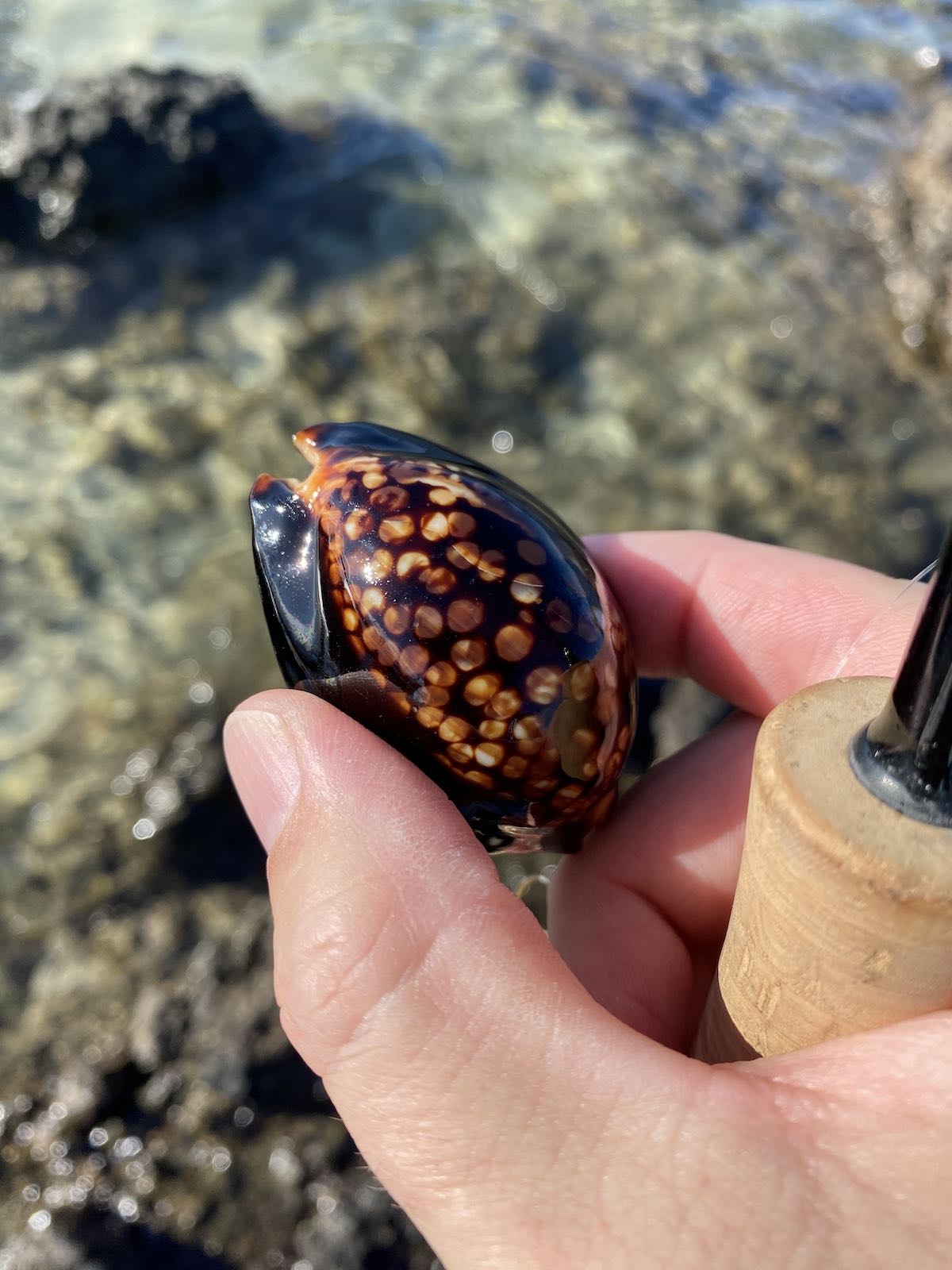
Here’s a beautiful live tiger cowrie I found on the rocks where I was fly fishing.
Summary
If you’re the type of angler who appreciates being able to sight-fish for new and fascinating species, cornetfish are for you. They’re aggressive eaters, they can be caught during the day or at night, and their appearance is nothing short of bizarre.
Within the U.S., anglers will have their best shots at cornetfish when visiting Hawaii.
Don’t miss my related articles on fly fishing for redfish and fly fishing for jack crevalle.
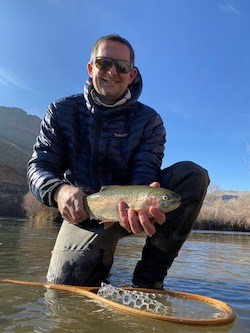
About the Author
My name's Sam and I'm a fly fishing enthusiast just like you. I get out onto the water 80+ times each year, whether it's blazing hot or snow is falling. I enjoy chasing everything from brown trout to snook, and exploring new waters is something I savor. My goal is to discover something new each time I hit the water. Along those lines, I record everything I learn in my fly fishing journal so I can share it with you.
Follow me on Instagram , YouTube, and Facebook to see pictures and videos of my catches and other fishing adventures!


